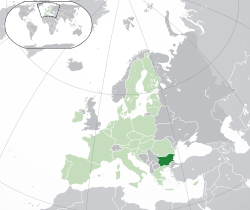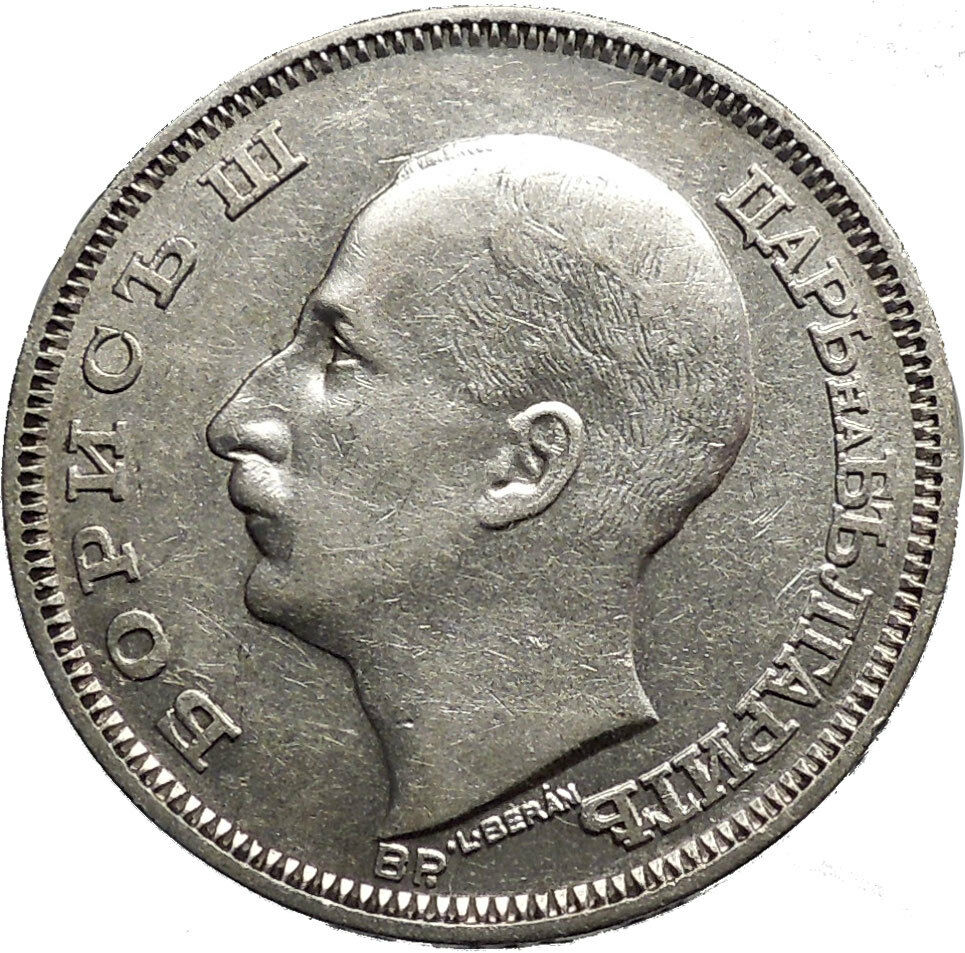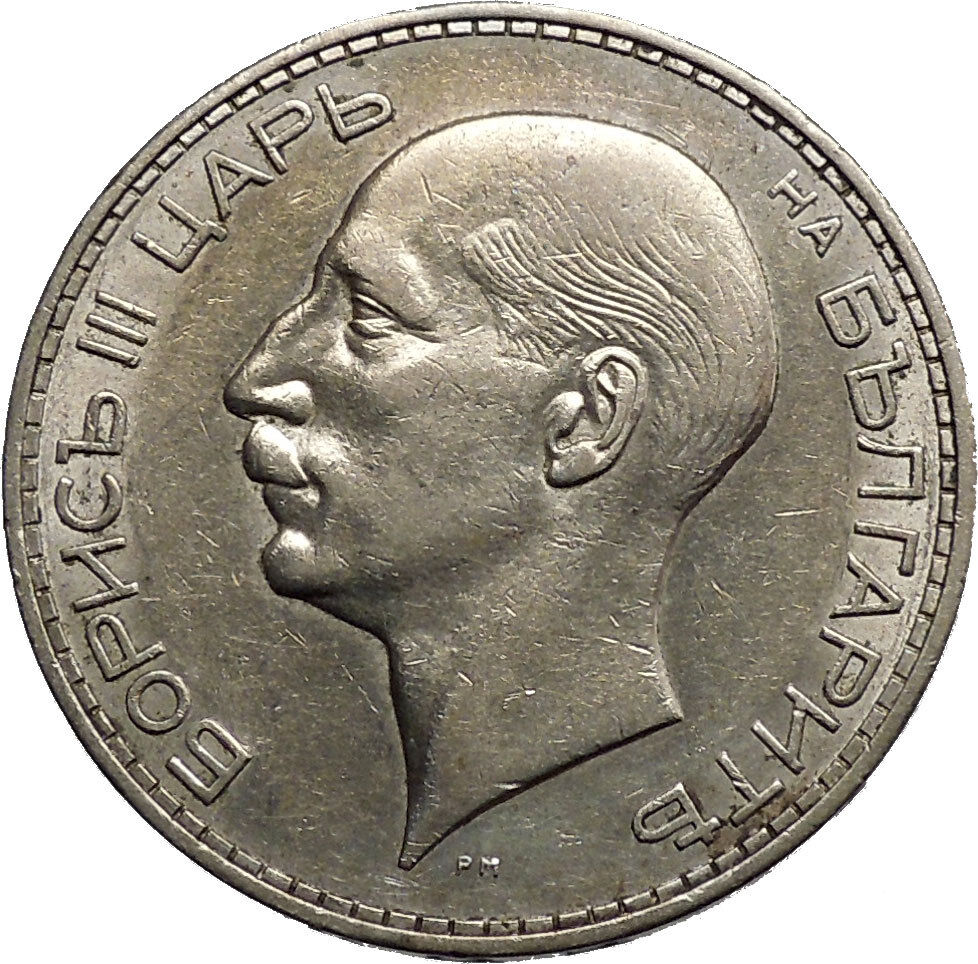|
Bulgaria
250th Anniversary of Paisi Hilendarski
1972 Silver 5 Leva 36mm (20.30 grams) 0.900 Silver (0.5932 oz. ASW)
Reference: KM# 81 | Engraver: D. Prahov
НАРОДНА РЕПУБЛИКА БЪЛГАРИЯ 5 ЛЕВА, Coat-of-arms of Bulgaria.
ПАИСИИ ХИЛЕНДАРКИ 1722-1972, Portrait of Paisi Hilendarski.
You are bidding on the exact item pictured, provided with a Certificate of Authenticity and Lifetime Guarantee of Authenticity.
 Saint Paisius of Hilendar or Paìsiy Hilendàrski (Bulgarian: Свети Паисий Хилендарски) (1722–1773) was a Bulgarian clergyman and a key Bulgarian National Revival figure. He is most famous for being the author of Istoriya Slavyanobolgarskaya, the second modern Bulgarian history after the work of Petar Bogdan Bakshev from 1667, “History of Bulgaria”. Most Bulgarians are taught that he was the forefather of the Bulgarian National Revival. Saint Paisius of Hilendar or Paìsiy Hilendàrski (Bulgarian: Свети Паисий Хилендарски) (1722–1773) was a Bulgarian clergyman and a key Bulgarian National Revival figure. He is most famous for being the author of Istoriya Slavyanobolgarskaya, the second modern Bulgarian history after the work of Petar Bogdan Bakshev from 1667, “History of Bulgaria”. Most Bulgarians are taught that he was the forefather of the Bulgarian National Revival.
Paisius was born in the Samokov eparchy of the time. There is a scientific dispute about the exact place of his birth, although the prevailing consensus points the town of Bansko. He established himself in the Hilandar monastery on Mount Athos in 1745, where he was later a hieromonk and deputy-abbot. Collecting materials for two years through hard work and even visiting the Habsburg Monarchy, he finished his Istoriya Slavyanobolgarskaya in 1762 in the Zograf Monastery. The book was the first attempt to write a complete history of Bulgaria and attempted to awake and strengthen Bulgarian national consciousnesses.
The most famous part of the whole book is the paragraph:
“Oh, you unwise moron! Why are you ashamed to call yourself a Bulgarian and why don’t you read and speak in your native language? Weren’t Bulgarians powerful and glorious once? Didn’t they take taxes from strong Romans and wise Greeks? Out of all the Slavic nations they were the bravest one. Our rulers were the first ones to call themselves kings, the first ones to have patriarchs, the first ones to baptise their people.(…) Why are you ashamed of your great history and your great language and why do you leave it to turn yourselves into Greeks? Why do you think they are any better than you? Well, here you’re right because did you see a Greek leave his country and ancestry like you do?”
This more or less signifies the purpose of the author who speaks about the danger of Bulgarians falling victim to the Hellenization policies of the mainly Greek clergy. These anti-Greek sentiments presented in Paisius writing, characterized the Greeks as some kind of Bulgarian national enemies. The book’s first manual copy was done by Sophronius of Vratsa in 1765. Structurally, Istoriya Slavyanobolgarskaya consists of two introductions, several chapters that discuss various historic events, a chapter about the “Slavic teachers”, the disciples of Cyril and Methodius, a chapter about the Bulgarian saints, and an epilogue. As Paisius toured Bulgaria as a mendicant friar, he brought his work, which was copied and spread among the Bulgarians. He is thought to have died on the way to Mount Athos near Ampelino (modern-day Asenovgrad).

Bulgaria (Bulgarian: България, tr. Bǎlgariya), officially the Republic of Bulgaria (Bulgarian: Република България, tr. Republika Bǎlgariya, IPA: [rɛˈpublikɐ bɐɫˈɡarijɐ]), is a country in southeastern Europe. It is bordered by Romania to the north, Serbia and Macedonia to the west, Greece and Turkey to the south, and the Black Sea to the east. With a territory of 110,994 square kilometres (42,855 sq mi), Bulgaria is Europe’s 16th-largest country.
 Organised prehistoric cultures began developing on current Bulgarian lands during the Neolithic period. Its ancient history saw the presence of the Thracians, Ancient Greeks, Persians, Celts, Romans, Goths, Alans and Huns. The emergence of a unified Bulgarian state dates back to the establishment of the First Bulgarian Empire in 681 AD, which dominated most of the Balkans and functioned as a cultural hub for Slavs during the Middle Ages. With the downfall of the Second Bulgarian Empire in 1396, its territories came under Ottoman rule for nearly five centuries. The Russo-Turkish War of 1877-78 led to the formation of the Third Bulgarian State. The following years saw several conflicts with its neighbours, which prompted Bulgaria to align with Germany in both world wars. In 1946 it became a one-party socialist state as part of the Soviet-led Eastern Bloc. In December 1989 the ruling Communist Party allowed multi-party elections, which subsequently led to Bulgaria’s transition into a democracy and a market-based economy. Organised prehistoric cultures began developing on current Bulgarian lands during the Neolithic period. Its ancient history saw the presence of the Thracians, Ancient Greeks, Persians, Celts, Romans, Goths, Alans and Huns. The emergence of a unified Bulgarian state dates back to the establishment of the First Bulgarian Empire in 681 AD, which dominated most of the Balkans and functioned as a cultural hub for Slavs during the Middle Ages. With the downfall of the Second Bulgarian Empire in 1396, its territories came under Ottoman rule for nearly five centuries. The Russo-Turkish War of 1877-78 led to the formation of the Third Bulgarian State. The following years saw several conflicts with its neighbours, which prompted Bulgaria to align with Germany in both world wars. In 1946 it became a one-party socialist state as part of the Soviet-led Eastern Bloc. In December 1989 the ruling Communist Party allowed multi-party elections, which subsequently led to Bulgaria’s transition into a democracy and a market-based economy.

Bulgaria’s population of 7.2 million people is predominantly urbanised and mainly concentrated in the administrative centres of its 28 provinces. Most commercial and cultural activities are centred on the capital and largest city, Sofia. The strongest sectors of the economy are heavy industry, power engineering, and agriculture, all of which rely on local natural resources.
The country’s current political structure dates to the adoption of a democratic constitution in 1991. Bulgaria is a unitary parliamentary republic with a high degree of political, administrative, and economic centralisation. It is a member of the European Union, NATO, and the Council of Europe; a founding state of the Organization for Security and Co-operation in Europe (OSCE); and has taken a seat at the UN Security Council three times.
|





 Saint Paisius of Hilendar or Paìsiy Hilendàrski (Bulgarian: Свети Паисий Хилендарски) (1722–1773) was a Bulgarian clergyman and a key Bulgarian National Revival figure. He is most famous for being the author of Istoriya Slavyanobolgarskaya, the second modern Bulgarian history after the work of Petar Bogdan Bakshev from 1667, “History of Bulgaria”. Most Bulgarians are taught that he was the forefather of the Bulgarian National Revival.
Saint Paisius of Hilendar or Paìsiy Hilendàrski (Bulgarian: Свети Паисий Хилендарски) (1722–1773) was a Bulgarian clergyman and a key Bulgarian National Revival figure. He is most famous for being the author of Istoriya Slavyanobolgarskaya, the second modern Bulgarian history after the work of Petar Bogdan Bakshev from 1667, “History of Bulgaria”. Most Bulgarians are taught that he was the forefather of the Bulgarian National Revival.
 Organised prehistoric cultures began developing on current Bulgarian lands during the Neolithic period. Its ancient history saw the presence of the Thracians, Ancient Greeks, Persians, Celts, Romans, Goths, Alans and Huns. The emergence of a unified Bulgarian state dates back to the establishment of the First Bulgarian Empire in 681 AD, which dominated most of the Balkans and functioned as a cultural hub for Slavs during the Middle Ages. With the downfall of the Second Bulgarian Empire in 1396, its territories came under Ottoman rule for nearly five centuries. The Russo-Turkish War of 1877-78 led to the formation of the Third Bulgarian State. The following years saw several conflicts with its neighbours, which prompted Bulgaria to align with Germany in both world wars. In 1946 it became a one-party socialist state as part of the Soviet-led Eastern Bloc. In December 1989 the ruling Communist Party allowed multi-party elections, which subsequently led to Bulgaria’s transition into a democracy and a market-based economy.
Organised prehistoric cultures began developing on current Bulgarian lands during the Neolithic period. Its ancient history saw the presence of the Thracians, Ancient Greeks, Persians, Celts, Romans, Goths, Alans and Huns. The emergence of a unified Bulgarian state dates back to the establishment of the First Bulgarian Empire in 681 AD, which dominated most of the Balkans and functioned as a cultural hub for Slavs during the Middle Ages. With the downfall of the Second Bulgarian Empire in 1396, its territories came under Ottoman rule for nearly five centuries. The Russo-Turkish War of 1877-78 led to the formation of the Third Bulgarian State. The following years saw several conflicts with its neighbours, which prompted Bulgaria to align with Germany in both world wars. In 1946 it became a one-party socialist state as part of the Soviet-led Eastern Bloc. In December 1989 the ruling Communist Party allowed multi-party elections, which subsequently led to Bulgaria’s transition into a democracy and a market-based economy.





